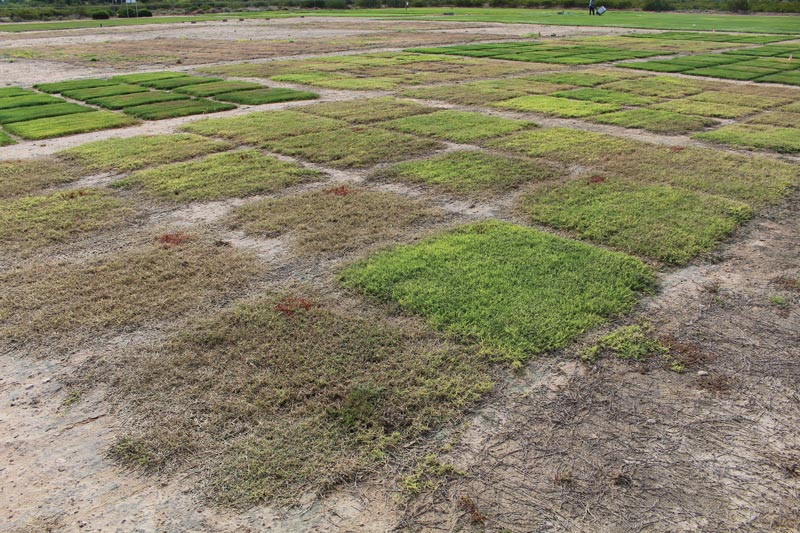
Photo by Matteo Serena
In summer 2017, a field study was conducted to evaluate the efficacy of herbicide combinations and sequential applications on bermudagrass (Cynodon dactylon L.) control in Las Cruces, N.M.
The labeled rates of fluazifop-p-butyl, clethodim, and low (2% v/v) and high (4% v/v) rates of glyphosate were each applied singly, or followed by one or two sequential applications of glyphosate (2% or 4%). Digital image analysis for bermudagrass cover (%) and visual ratings for bermudagrass injury (%) were collected weekly until 78 days after initial treatment.
Although the single application of glyphosate (4%) caused greater injury than fluazifop-p-butyl and clethodim, all single applications of herbicides provided inferior bermudagrass control when compared with applications that included a sequential glyphosate treatment.
With clethodim, adding one sequential application of either the high or low rates of glyphosate significantly decreased bermudagrass cover, indicating that there was no need for a second sequential application of glyphosate to increase injury. There was no evidence that one sequential application of the high rate of glyphosate provided better control of bermudagrass than one sequential application of the low rate. Two sequential applications of the high rate of glyphosate did not cause greater injury than two sequential applications of the low rate.
Overall, bermudagrass injury was greater when clethodim was applied in conjunction with one sequential application of glyphosate; thus, there was no need for increased rates or numbers of sequential applications with this combination.
— Leslie Beck, Ph.D., and Matteo Serena, Ph.D., New Mexico State University, Las Cruces, N.M.
Editor’s note: An earlier version of this summary was published in the 2018 ASA-CSSA Meeting Abstracts, ASA and CSSA, Madison, Wis.
Teresa Carson is GCM’s science editor.